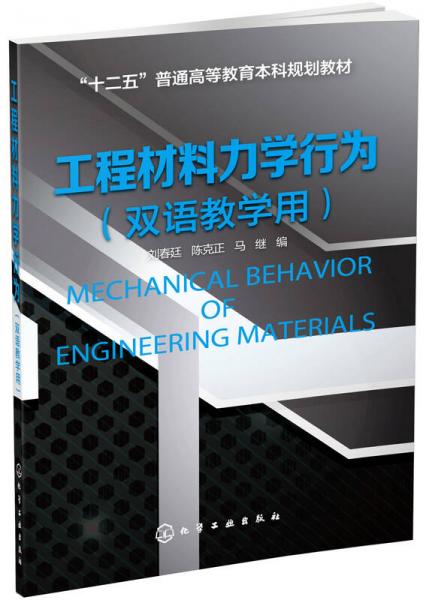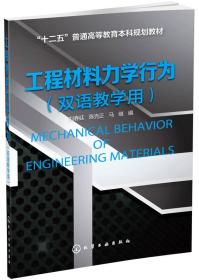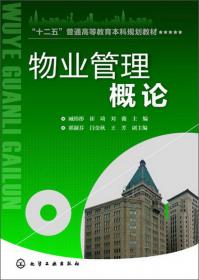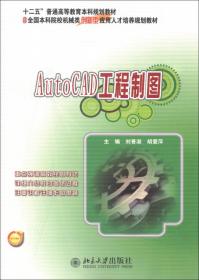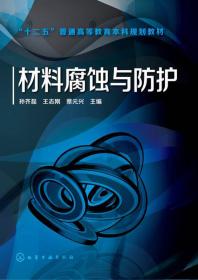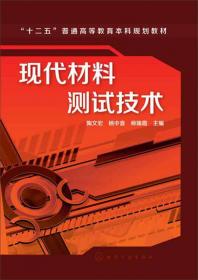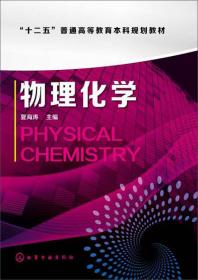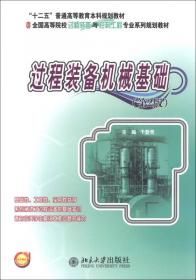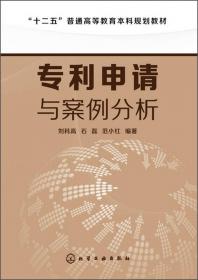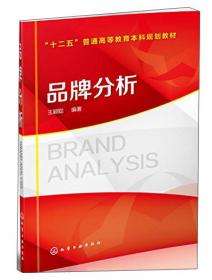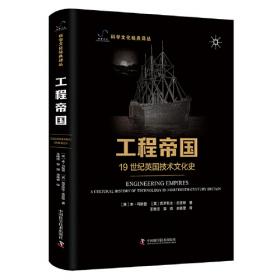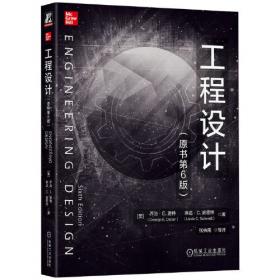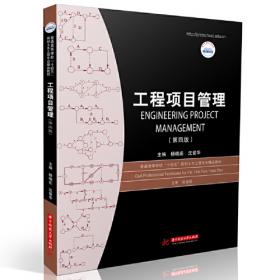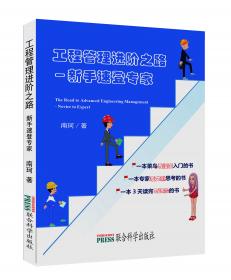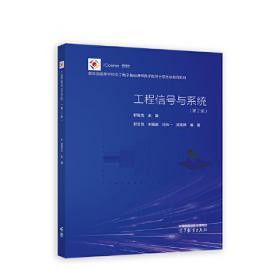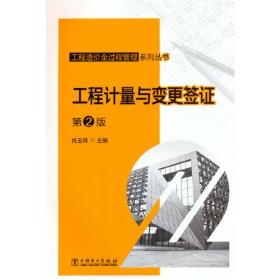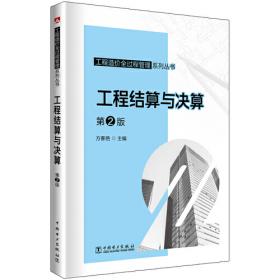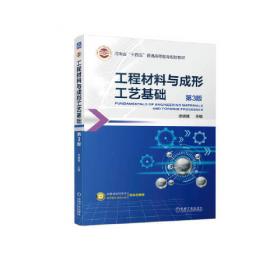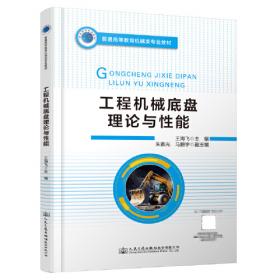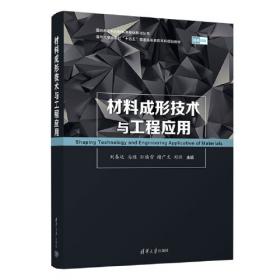工程材料力学行为(双语教学用书)
出版时间:
2015-03
版次:
1
ISBN:
9787122223494
定价:
39.00
装帧:
平装
开本:
16开
纸张:
胶版纸
页数:
255页
字数:
408千字
正文语种:
简体中文,英语
4人买过
-
《工程材料力学行为(双语教学用书)》以“材料力学性能的基本概念一物理性质性能指标的测试一影响因素指标的工程意义与评价及应用”为主线贯穿始终,使学生对材料性能知识有着较完整的了解,以便达到举一反三、触类旁通的效果。《工程材料力学行为(双语教学用书)》内容共分十一章,第一至七章为金属材料的力学性能,介绍材料在静载下的力学性能(包括弹性、塑性、强度、硬度、断裂等)、冲击韧性、断裂韧性、疲劳性能及高温蠕变性能等。第八至十章的论述以金属材料为主,兼顾陶瓷、高分子和复合材料的力学行为。第十一章介绍环境对工程材料如金属、高分子和复合材料的影响。为配合学习,各章末附有英文专业术语的中文翻译,并带有参考文献和习题,便于读者个性发展和深入研究学习。
《工程材料力学行为(双语教学用书)》涉及知识面宽,信息量大,基础性、科学性、实用性强,在叙述方面,深入浅出,清晰易懂,内容新颖,引入新材料、新技术、新成果和新进展,有利于培养学生的创新意识,拓宽读者专业知识面,便于读者了解当前国内外工程材料力学行为的研究现状和发展趋势。
《工程材料力学行为(双语教学用书)》作为材料类和机械类专业基础课程材料科学导论的教学用书,适用教学时数为48~64学时,主要面向材料类和材料加工类以及机械类本科学生,也可供近材料类专业选用和有关工程技术人员学习参考,可根据具体情况进行删减或补充。 Chapter 1Introduction
REFERENCES
Chapter 2Mechanical Properties of Metals
2.1 Introduction
2.2 Concepts of Stress and Strain
2.3 StressStrain Behavior
2.4 Anelasticity(or Viscoelasticity)
2.5 Elastic Properties of Materials
2.6 Tensile Properties
2.6.1 Yield Strength
2.6.2 Tensile Strength
2.6.3 Ductility
2.6.4 Toughness
2.6.5 Resilience
2.7 True Stress and Strain
2.8 Elastic Recovery After Plastic Deformation
2.9 Compressive,Shear,and Torsion Deformation
2.10 Hardness
2.10.1 Rockwell Hardness Tests
2.10.2 Brinell Hardness Tests
2.10.3 Knoop and Vickers Microindentation Hardness Tests
2.10.4 Correlation between Hardness and Tensile Strength
SUMMARY
IMPORTANT TERMS AND CONCEPTS
REFERENCES38
QUESTIONS AND PROBLEM
Chapter 3 Fracture: Microscopic Aspects
3.1 Introduction
3.2 Classification of Fracture4
3.2.1 Ductile Fracture
3.2.2 Brittle Fracture
3.3 Process of Fracture
3.3.1 Crack Nucleation
3.3.2 Ductile Fracture
3.3.3 Brittle, Cleavage Fracture
3.4 Impact Fracture60
3.4.1 Impact Testing Techniques
3.4.2 DuctiletoBrittle Transition
SUMMARY
IMPORTANT TERMS AND CONCEPTS
REFERENCES
QUESTIONS AND PROBLEMS
Chapter 4Fracture: Macroscopic Aspects
4.1 Introduction
4.2 Theoretical Cleavage Strength
4.3 Stress Concentration
4.3.1 Stress Concentrations
4.3.2 Stress Concentration Factor
4.4 Griffith Criterion of Fracture
4.5 Fracture Toughness
4.5.1 Hypotheses of LEFM
4.5.2 CrackTip Separation Modes
4.5.3 Stress Field in an Isotropic Material in the Vicinity of a Crack Tip
4.5.4 Details of the CrackTip Stress Field in Model
4.5.5 PlasticZone Size Correction
4.6 Fracture Toughness Parameters
4.6.1 Crack Extension Force G
4.6.2 Crack Tip Opening Displacement(CTOD)
4.6.3 J Integral
4.6.4 R Curve
4.6.5 Relationships among Different Fracture Toughness Parameters
SUMMARY
IMPORTANT TERMS AND CONCEPTS
REFERENCES
QUESTIONS AND PROBLEMS
Chapter 5 Fatigue of Metal Materials
5.1 Introduction
5.2 Cyclic Stresses
5.3 The SN Curve
5.4 Mechanisms of Fatigue
5.4.1 Fatigue Crack Nucleation
5.4.2 Fatigue Crack Propagation
5.5 Linear Elastic Fracture Mechanics Applied to Fatigue
5.6 Factors That Affect Fatigue Life
5.7 Environmental Effects
SUMMARY
IMPORTANT TERMS AND CONCEPTS
REFERENCES
QUESTIONS AND PROBLEMS
Chapter 6 Creep of Metal Materials
6.1 Introduction
6.2 Generalized Creep Behavior
6.3 Stress and Temperature Effects
6.4 Fundamental Mechanisms Responsible for Creep1
6.4.1 Diffusion Creep
6.4.2 Dislocation (or Power Law) Creep
6.4.3 Dislocation Glide
6.4.4 GrainBoundary Sliding
6.5 Data Extrapolation Methods
6.6 Alloys for HighTemperature
SUMMARY
IMPORTANT TERMS AND CONCEPTS
REFERENCES
QUESTIONS AND PROBLEMS
Chapter 7 Strengthening Strategies of Metal Materials
7.1 Introduction
7.2 Dislocations
7.3 Boundary Strengthening
7.4 Strain Hardening (or Cold Working)
7.5 SolidSolution Alloying
7.6 Precipitation and DispersionAlloying
SUMMARY
IMPORTANT TERMS AND CONCEPTS
REFERENCES
QUESTIONS AND PROBLEMS
Chapter 8 Mechanical Behavior of Ceramics Materials
8.1 Introduction
8.2 StressStrain Behavior
8.3 Mechanisms of Plastic Deformation
8.4 Brittle Fracture of Ceramics
8.5 Various Mechanical Considerations
SUMMARY
IMPORTANT TERMS AND CONCEPTS
REFERENCES
QUESTIONS AND PROBLEMS
Chapter 9 Mechanical properties of Polymers Materials
9.1 Introduction
9.2 StressStrain Behavior
9.3 Macroscopic Deformation
9.4 Viscoelastic Deformation
9.5 Deformation of Elastomers
9.6 Fracture of Polymers
9.7 Various Mechanical Characteristics
9.8 Mechanisms of Deformation and for Strengthening of Polymers
9.9 Factors that Influence the Mechanical Properties of Semicrystalline
SUMMARY
IMPORTANT TERMS AND CONCEPTS
REFERENCES
QUESTIONS AND PROBLEMS
Chapter 10 Mechanical Properties of Composite Materials
10.1 Introduction210
10.2 StressStrain Behavior
10.2.1 Elastic Moduli
10.2.2 Strength
10.3 Toughness
10.4 Fracture in Composites
10.4.1 Single and Multiple Fracture
10.4.2 Failure Modes in Composites
SUMMARY
IMPORTANT TERMS AND CONCEPTS
REFERENCES
QUESTIONS AND PROBLEMS
Chapter 11 Environmental Effects in Metals,Ceramics and Polymers
11.1 Introduction
11.2 Electrochemical Nature of Corrosion in Metals
11.3 Passivity
11.4 Forms of Corrosion
11.5 Environmentally Assisted Fracture in Metals
11.5.1 Stress Corrosion Cracking (SCC)
11.5.2 Hydrogen Damage in Metals
11.6 Corrosion of Ceramic Materials
11.7 Degradation of Polymers
11.7.1 Swelling and Dissolution
11.7.2 Bond Rupture
11.7.3 Weathering
11.8 Corrosion Prevention
SUMMARY
IMPORTANT TERMS AND CONCEPTS
REFERENCES
QUESTIONS AND PROBLEMS
-
内容简介:
《工程材料力学行为(双语教学用书)》以“材料力学性能的基本概念一物理性质性能指标的测试一影响因素指标的工程意义与评价及应用”为主线贯穿始终,使学生对材料性能知识有着较完整的了解,以便达到举一反三、触类旁通的效果。《工程材料力学行为(双语教学用书)》内容共分十一章,第一至七章为金属材料的力学性能,介绍材料在静载下的力学性能(包括弹性、塑性、强度、硬度、断裂等)、冲击韧性、断裂韧性、疲劳性能及高温蠕变性能等。第八至十章的论述以金属材料为主,兼顾陶瓷、高分子和复合材料的力学行为。第十一章介绍环境对工程材料如金属、高分子和复合材料的影响。为配合学习,各章末附有英文专业术语的中文翻译,并带有参考文献和习题,便于读者个性发展和深入研究学习。
《工程材料力学行为(双语教学用书)》涉及知识面宽,信息量大,基础性、科学性、实用性强,在叙述方面,深入浅出,清晰易懂,内容新颖,引入新材料、新技术、新成果和新进展,有利于培养学生的创新意识,拓宽读者专业知识面,便于读者了解当前国内外工程材料力学行为的研究现状和发展趋势。
《工程材料力学行为(双语教学用书)》作为材料类和机械类专业基础课程材料科学导论的教学用书,适用教学时数为48~64学时,主要面向材料类和材料加工类以及机械类本科学生,也可供近材料类专业选用和有关工程技术人员学习参考,可根据具体情况进行删减或补充。
-
目录:
Chapter 1Introduction
REFERENCES
Chapter 2Mechanical Properties of Metals
2.1 Introduction
2.2 Concepts of Stress and Strain
2.3 StressStrain Behavior
2.4 Anelasticity(or Viscoelasticity)
2.5 Elastic Properties of Materials
2.6 Tensile Properties
2.6.1 Yield Strength
2.6.2 Tensile Strength
2.6.3 Ductility
2.6.4 Toughness
2.6.5 Resilience
2.7 True Stress and Strain
2.8 Elastic Recovery After Plastic Deformation
2.9 Compressive,Shear,and Torsion Deformation
2.10 Hardness
2.10.1 Rockwell Hardness Tests
2.10.2 Brinell Hardness Tests
2.10.3 Knoop and Vickers Microindentation Hardness Tests
2.10.4 Correlation between Hardness and Tensile Strength
SUMMARY
IMPORTANT TERMS AND CONCEPTS
REFERENCES38
QUESTIONS AND PROBLEM
Chapter 3 Fracture: Microscopic Aspects
3.1 Introduction
3.2 Classification of Fracture4
3.2.1 Ductile Fracture
3.2.2 Brittle Fracture
3.3 Process of Fracture
3.3.1 Crack Nucleation
3.3.2 Ductile Fracture
3.3.3 Brittle, Cleavage Fracture
3.4 Impact Fracture60
3.4.1 Impact Testing Techniques
3.4.2 DuctiletoBrittle Transition
SUMMARY
IMPORTANT TERMS AND CONCEPTS
REFERENCES
QUESTIONS AND PROBLEMS
Chapter 4Fracture: Macroscopic Aspects
4.1 Introduction
4.2 Theoretical Cleavage Strength
4.3 Stress Concentration
4.3.1 Stress Concentrations
4.3.2 Stress Concentration Factor
4.4 Griffith Criterion of Fracture
4.5 Fracture Toughness
4.5.1 Hypotheses of LEFM
4.5.2 CrackTip Separation Modes
4.5.3 Stress Field in an Isotropic Material in the Vicinity of a Crack Tip
4.5.4 Details of the CrackTip Stress Field in Model
4.5.5 PlasticZone Size Correction
4.6 Fracture Toughness Parameters
4.6.1 Crack Extension Force G
4.6.2 Crack Tip Opening Displacement(CTOD)
4.6.3 J Integral
4.6.4 R Curve
4.6.5 Relationships among Different Fracture Toughness Parameters
SUMMARY
IMPORTANT TERMS AND CONCEPTS
REFERENCES
QUESTIONS AND PROBLEMS
Chapter 5 Fatigue of Metal Materials
5.1 Introduction
5.2 Cyclic Stresses
5.3 The SN Curve
5.4 Mechanisms of Fatigue
5.4.1 Fatigue Crack Nucleation
5.4.2 Fatigue Crack Propagation
5.5 Linear Elastic Fracture Mechanics Applied to Fatigue
5.6 Factors That Affect Fatigue Life
5.7 Environmental Effects
SUMMARY
IMPORTANT TERMS AND CONCEPTS
REFERENCES
QUESTIONS AND PROBLEMS
Chapter 6 Creep of Metal Materials
6.1 Introduction
6.2 Generalized Creep Behavior
6.3 Stress and Temperature Effects
6.4 Fundamental Mechanisms Responsible for Creep1
6.4.1 Diffusion Creep
6.4.2 Dislocation (or Power Law) Creep
6.4.3 Dislocation Glide
6.4.4 GrainBoundary Sliding
6.5 Data Extrapolation Methods
6.6 Alloys for HighTemperature
SUMMARY
IMPORTANT TERMS AND CONCEPTS
REFERENCES
QUESTIONS AND PROBLEMS
Chapter 7 Strengthening Strategies of Metal Materials
7.1 Introduction
7.2 Dislocations
7.3 Boundary Strengthening
7.4 Strain Hardening (or Cold Working)
7.5 SolidSolution Alloying
7.6 Precipitation and DispersionAlloying
SUMMARY
IMPORTANT TERMS AND CONCEPTS
REFERENCES
QUESTIONS AND PROBLEMS
Chapter 8 Mechanical Behavior of Ceramics Materials
8.1 Introduction
8.2 StressStrain Behavior
8.3 Mechanisms of Plastic Deformation
8.4 Brittle Fracture of Ceramics
8.5 Various Mechanical Considerations
SUMMARY
IMPORTANT TERMS AND CONCEPTS
REFERENCES
QUESTIONS AND PROBLEMS
Chapter 9 Mechanical properties of Polymers Materials
9.1 Introduction
9.2 StressStrain Behavior
9.3 Macroscopic Deformation
9.4 Viscoelastic Deformation
9.5 Deformation of Elastomers
9.6 Fracture of Polymers
9.7 Various Mechanical Characteristics
9.8 Mechanisms of Deformation and for Strengthening of Polymers
9.9 Factors that Influence the Mechanical Properties of Semicrystalline
SUMMARY
IMPORTANT TERMS AND CONCEPTS
REFERENCES
QUESTIONS AND PROBLEMS
Chapter 10 Mechanical Properties of Composite Materials
10.1 Introduction210
10.2 StressStrain Behavior
10.2.1 Elastic Moduli
10.2.2 Strength
10.3 Toughness
10.4 Fracture in Composites
10.4.1 Single and Multiple Fracture
10.4.2 Failure Modes in Composites
SUMMARY
IMPORTANT TERMS AND CONCEPTS
REFERENCES
QUESTIONS AND PROBLEMS
Chapter 11 Environmental Effects in Metals,Ceramics and Polymers
11.1 Introduction
11.2 Electrochemical Nature of Corrosion in Metals
11.3 Passivity
11.4 Forms of Corrosion
11.5 Environmentally Assisted Fracture in Metals
11.5.1 Stress Corrosion Cracking (SCC)
11.5.2 Hydrogen Damage in Metals
11.6 Corrosion of Ceramic Materials
11.7 Degradation of Polymers
11.7.1 Swelling and Dissolution
11.7.2 Bond Rupture
11.7.3 Weathering
11.8 Corrosion Prevention
SUMMARY
IMPORTANT TERMS AND CONCEPTS
REFERENCES
QUESTIONS AND PROBLEMS
查看详情
-
八五品
江苏省南京市
平均发货16小时
成功完成率81.7%
-
八五品
山东省济南市
平均发货11小时
成功完成率94.02%
-
全新
广东省广州市
平均发货18小时
成功完成率86.76%
-
八五品
山东省滨州市
平均发货7小时
成功完成率68.75%
-
八五品
山东省济南市
平均发货13小时
成功完成率61.54%

 占位居中
占位居中

